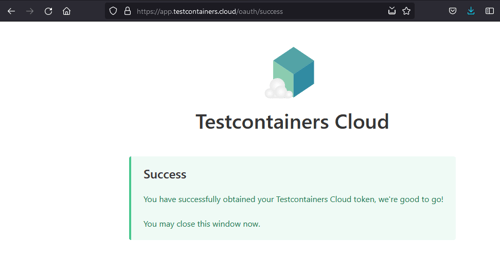Using PostgreSQL with Payara Server
Originally published on 18 Jan 2018
Last updated on 17 Feb 2020
 by Jonathan Coustick
by Jonathan Coustick
PostgreSQL is a fully SQL-Compliant relational database you can use with Payara Server and with no commercial licensing requirements it is well suited for production environments. This blog will show you how to set up a new PostgreSQL installation on Ubuntu and connect to it from Payara Server.
To install PostgreSQL on Ubuntu based distributions:
sudo apt-get install postgres postgres-client postgresql-contrib
Download the JDBC driver from https://jdbc.postgresql.org/download.html and then add it to Payara Server by running:
asadmin> add-library /path/to/download/jdbcdriver.jar`
Login to Postgres with the default account by running the commands:
sudo -i -u postgres
psql
You now need to set a password for the PostgreSQL user on the database. Do so with:
\password postgres
and then enter the new password when prompted.
For full functionality of PostgreSQL, server instrumentation must be enabled, you do this by running the command in Postgres
CREATE EXTENSION adminpack;
You will notice there are two pools already. These are the default server pools and are not recommended for production usage. A new connection pool is needed for PostgreSQL, which you can create by clicking the New button.
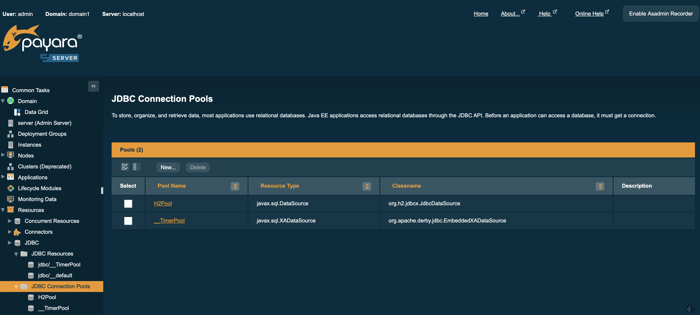
Now to create a connection pool. For this tutorial the admin console will be used, but this can be done using asadmin commands or web.xml. The pool name is how the connection pool is to be referred to within Payara Server, for this tutorial I will call it postgresqlpool. Set the resource type to javax.sql.DataSource and the database driver vendor to PostgreSQL. Then click Next.
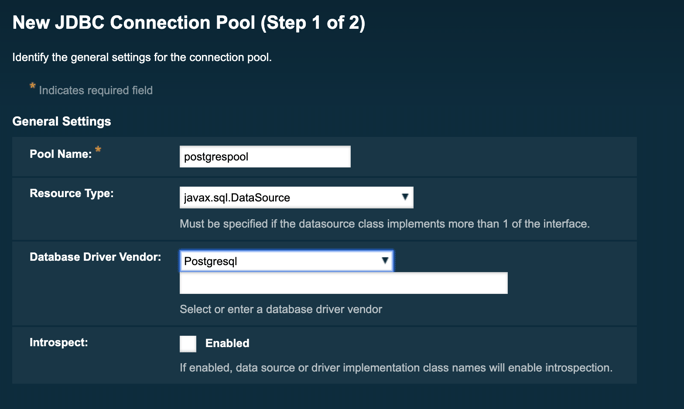
On the next page, scroll down to the bottom where there is the additional properties table. There you must set the following properties in order to be able to connect:
- serverName – this is the location of the PostgreSQL server. Put in localhost.
- User – the username for the database. In this case the default account which we edited earlier, postgres.
- password – the password that you specified earlier. In production environments it is recommended that you use an alias. See Payara Documentation for more details.
You can leave the rest of the fields blank for now.
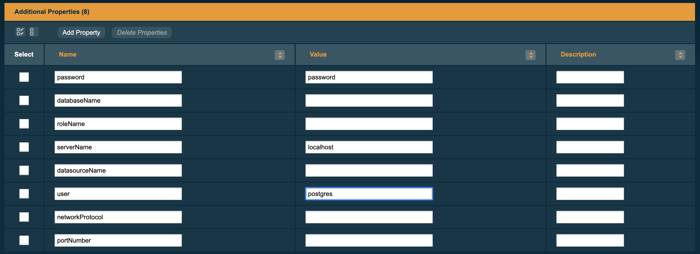
You can test the connection by clicking the ping button once the pool has been created. For more information on connection pools see the blog post here.
![]()
Then go to Resources → JDBC → JDBC Resources and click on New.
Enter the JNDI name that you wish to use within your applications and set the pool name to be that of the pool set up in the previous step.
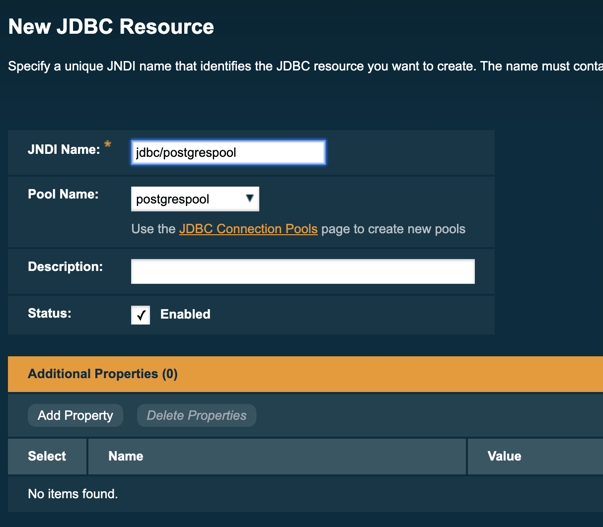
Now, you can inject a reference to a datasource for the PostgreSQL database inside a managed component like this:
@Resource(lookup = "jdbc/postgrespool")
DataSource ds;
Note that you can only use resources in a web container or a managed bean (i.e. CDI beans, EJBs etc.).
Related Posts
Continuous Integration and Continuous Deployment for Jakarta EE Applications Made Easy
Published on 25 Mar 2024
by Luqman Saeed
1 Comment
Easy Jakarta EE Integration Testing with the Payara Platform and Testcontainers
Published on 24 Mar 2022
by Fabio Turizo
0 Comments


